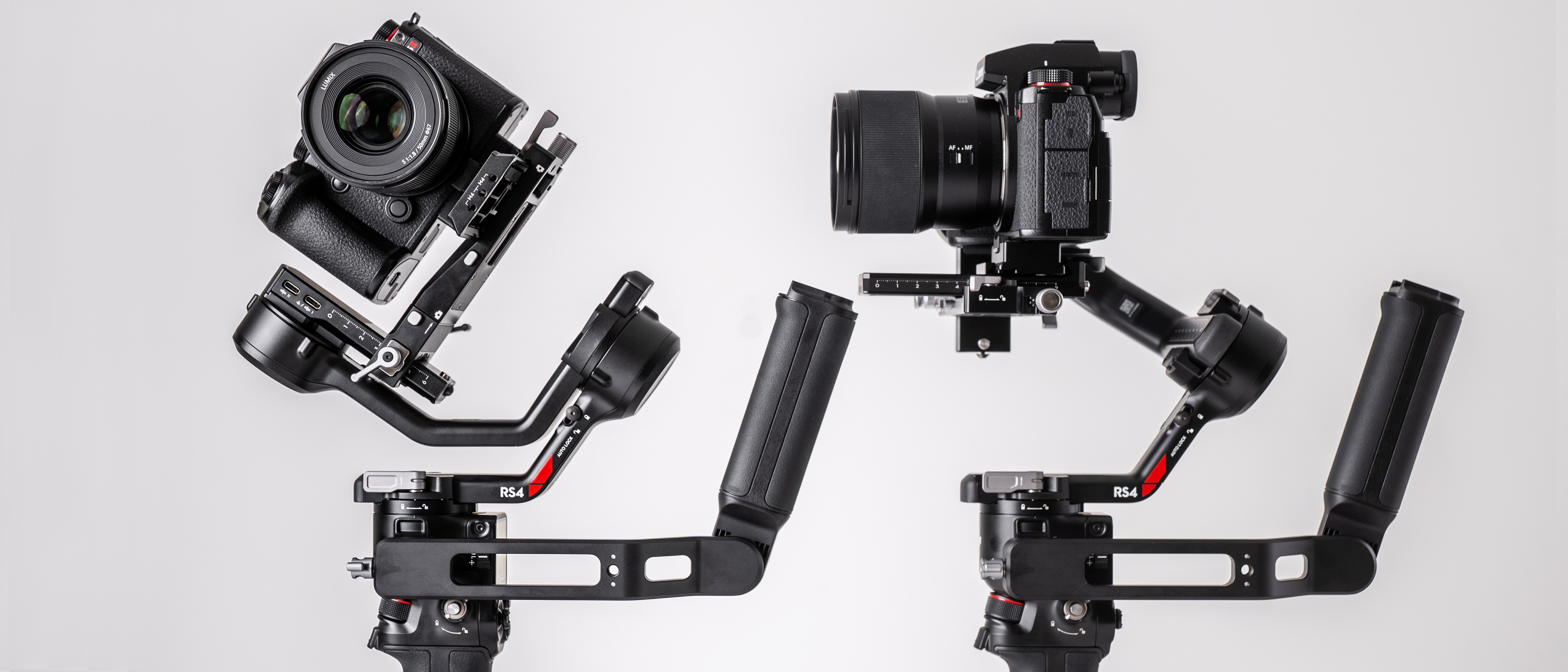TechRadar Verdict
That I didn’t want to throw the DJI RS 4 out of the window at any stage during this review is perhaps testament to how well the company has focused on tackling the common frustrations that litter the history of these devices. It’s very easy to use – especially in vertical mode – and easy to adjust, and its integration with the Focus Pro follow-focus motor and camera controls also solve a lot of problems.
Pros
- +
Very easy to set up
- +
Vertical mode is excellent
- +
Can handle more accessories
- +
Lots of online support videos
- +
Lightweight
Cons
- -
Android version of the app isn’t on the Play Store
Why you can trust TechRadar
DJI RS 4: two-minute review
The RS 4 is the latest in line of handheld gimbals to demonstrate why DJI is the biggest name in this market. Gimbals can be a nuisance to use, taking too long to set up and being given to outbursts of freakish behavior in polite company, which is why many videographers try to avoid using them whenever possible.
DJI, however, has recognised and acknowledged this common perception, and has continuously worked to iron out the many niggles that plague gimbal users, and the RS 4 is its next step is the process of making the operator-gimbal encounter stress-free. DJI had gone quite a long way on that journey with the Ronin RS 3, but this new model brings a host of changes that make life quite a bit better.
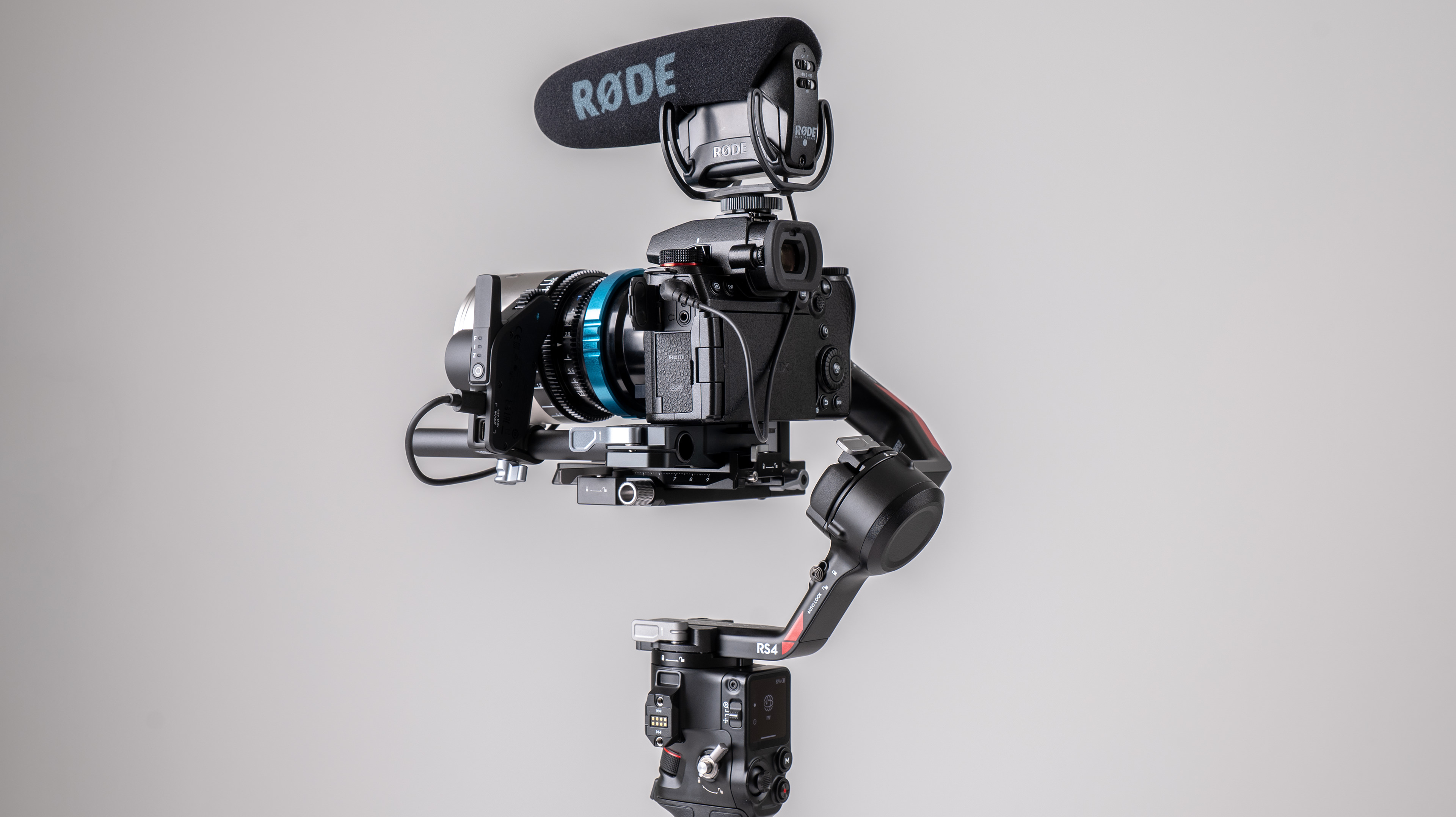
One thing that all videographers will appreciate immediately is the Teflon coating on the arms of the gimbal. Along with the micro-adjustment knob on the camera mounting that was introduced in the RS 3, this makes balancing and rebalancing the gimbal much easier. The Teflon surfaces enable users to make tiny shifts of the axis mounting points with less effort, instead of having to put lots of pressure on the arms to overcome inertia, only to find the shift has gone too far. With the large locking clasps on the arms, what might seem a minor change actually makes a big difference, and I had the gimbal balanced with my camera very quickly. I also was quite happy to add extras to the camera after balancing, as I knew it wouldn’t be a huge drama to rebalance the system.
On the subject of balancing, the RS 4 has a longer tilt-axis arm than its predecessor, which makes it possible to add more accessories to the camera without running out of arm to balance it all. The arm is 8.5mm longer than the arm on the RS 3, which is enough to allow the user to add microphones on top of the camera and/or a pile of filters on the front of the lens. In total the Ronin RS 4 can carry up to 6.6lbs / 3kg, which is the same as the capacity of the RS 3, but the new arm means that weight doesn’t necessarily have to be placed right around the center of gravity of the camera.
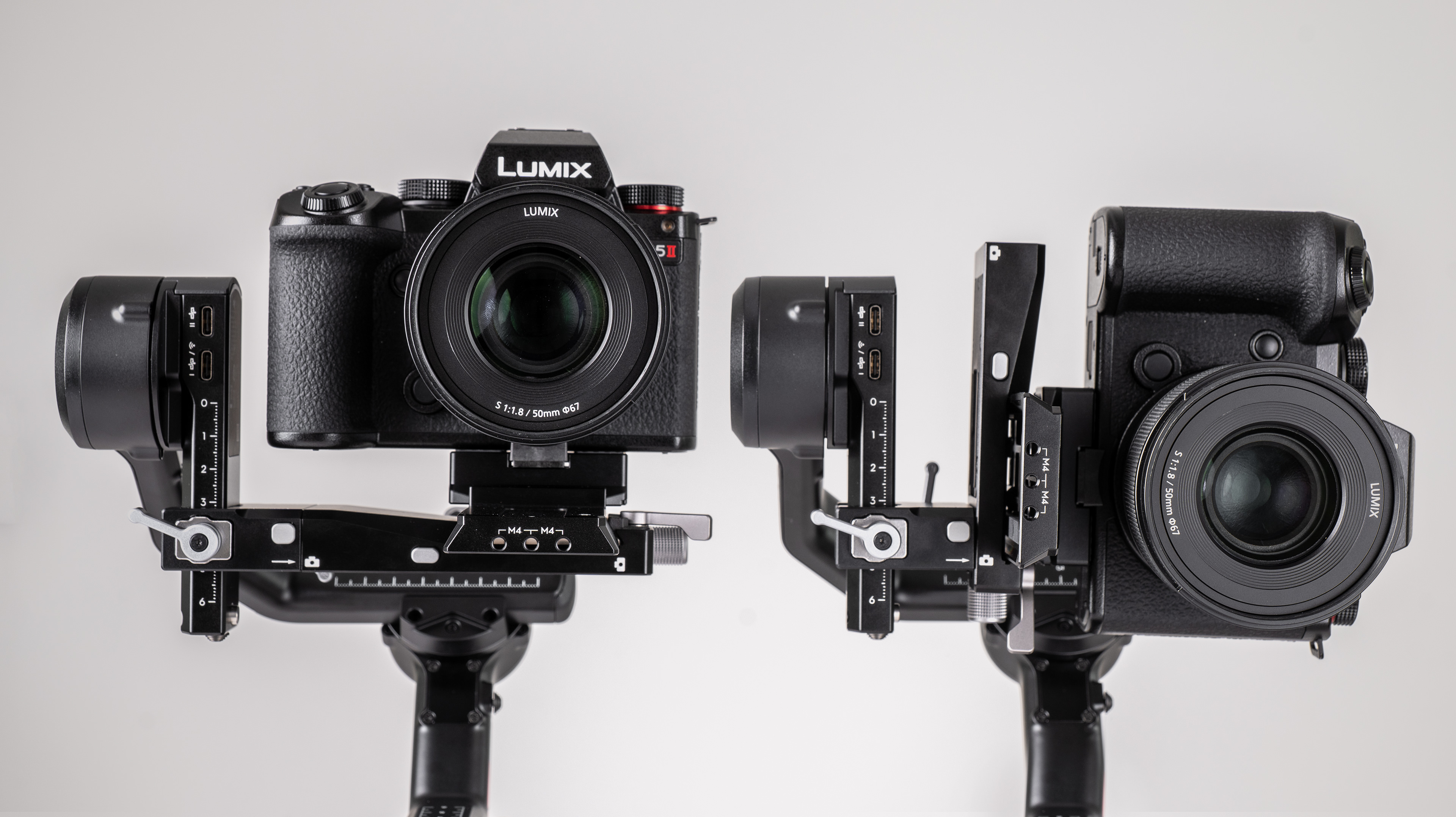
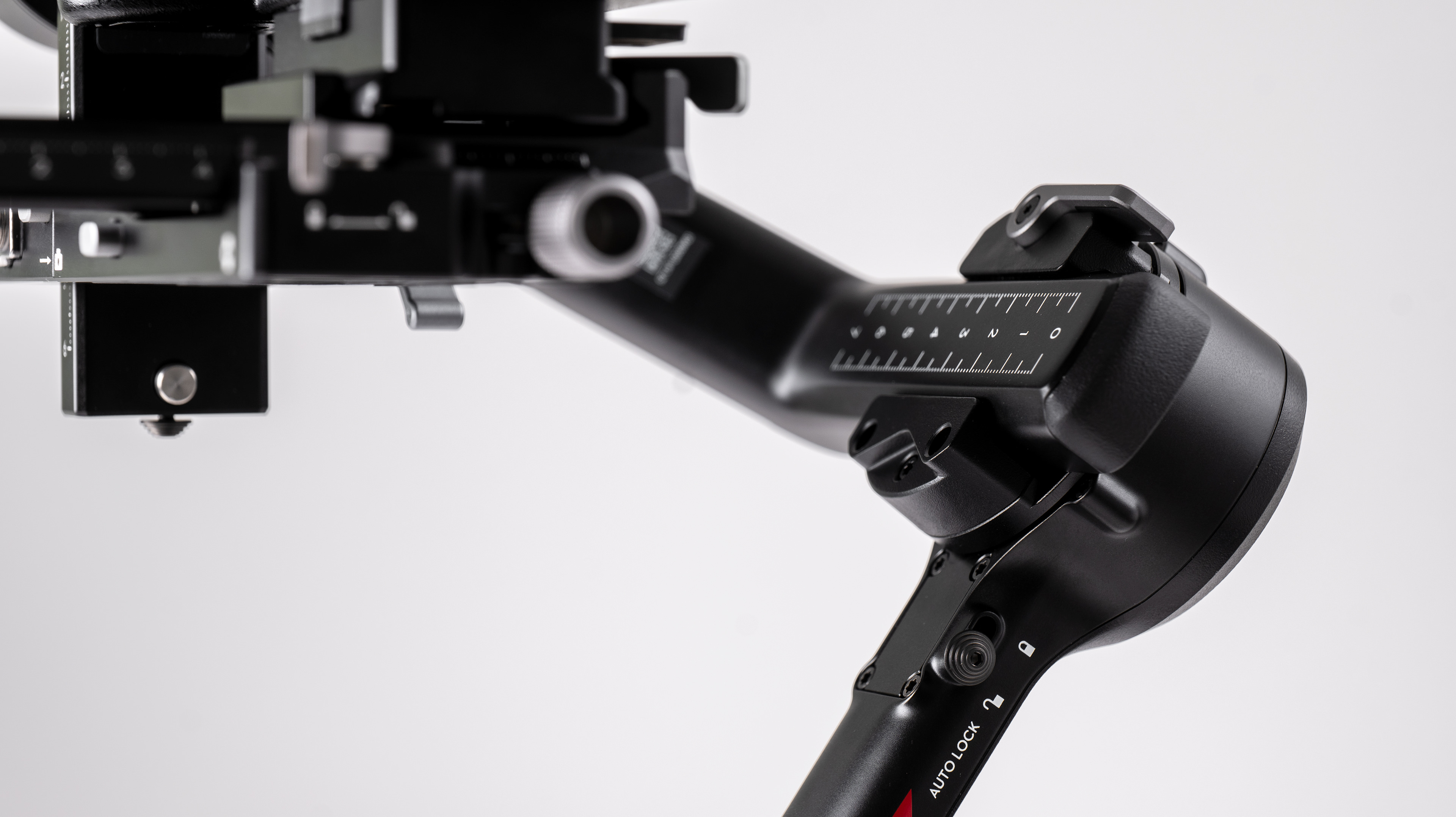
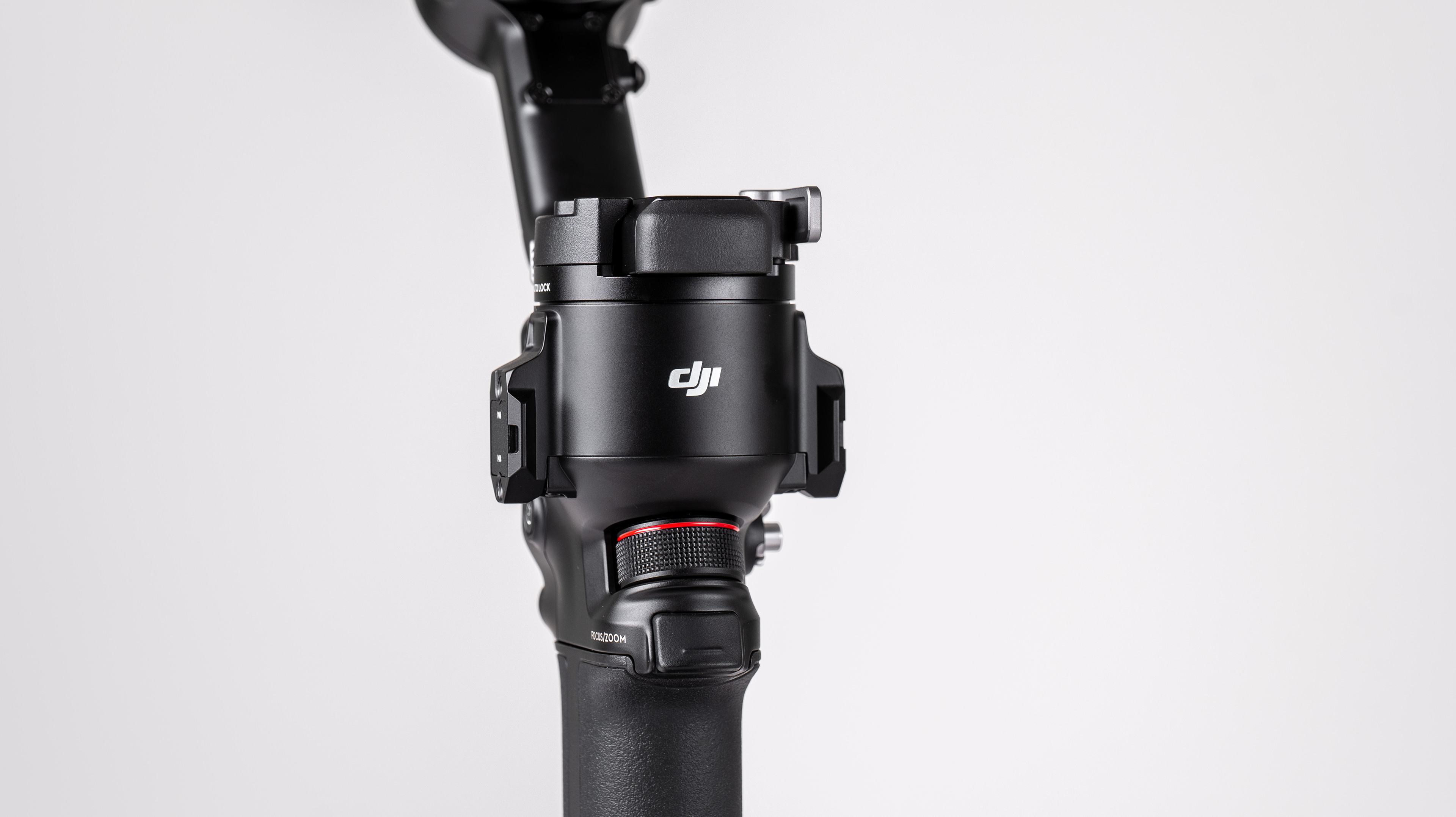
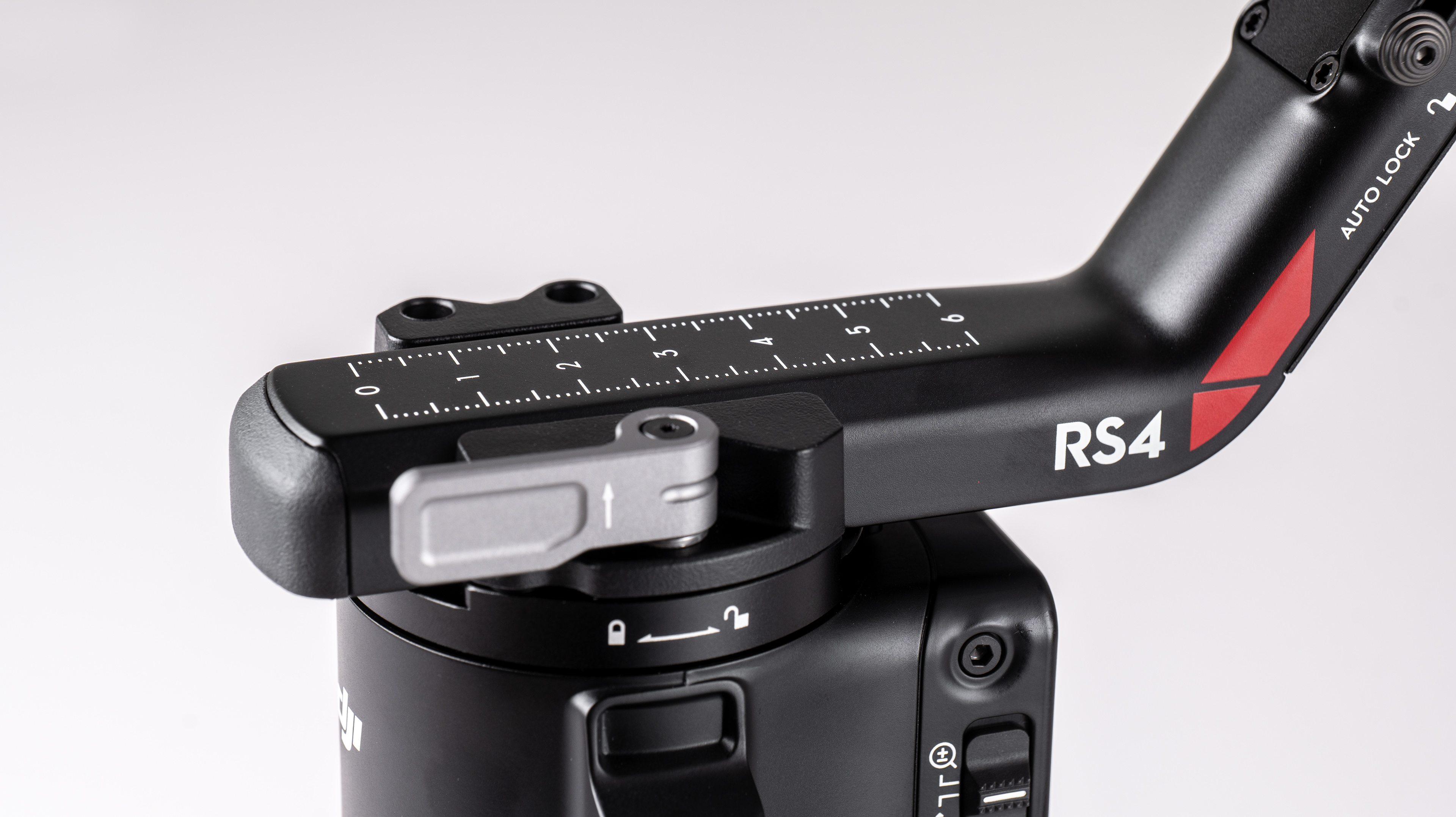
The other big difference in this model compared to the previous one is the way you can shoot vertical video. With the RS 3, you needed to set Portrait mode in the PTF settings, but with the RS 4 you just unclip the camera mounting plate and stick it on the other way. The camera mount has two connection points – a regular one on the end and one underneath – and a quick-release button. You simply unlock the plate, release it, and reattach it using the connection point underneath so that the camera is held in the vertical position. It’s very quick to do, the camera doesn’t need rebalancing, and you have the full range of follow modes available, as well as the movements you can create via the joystick. It feels like a much more satisfactory solution.
Another important upgrade is the introduction of a 4th-generation stabilization algorithm that not only improves stabilization in horizontal orientation when things are bumpy, such as when you’re running, but which is also better optimized for vertical shooting.
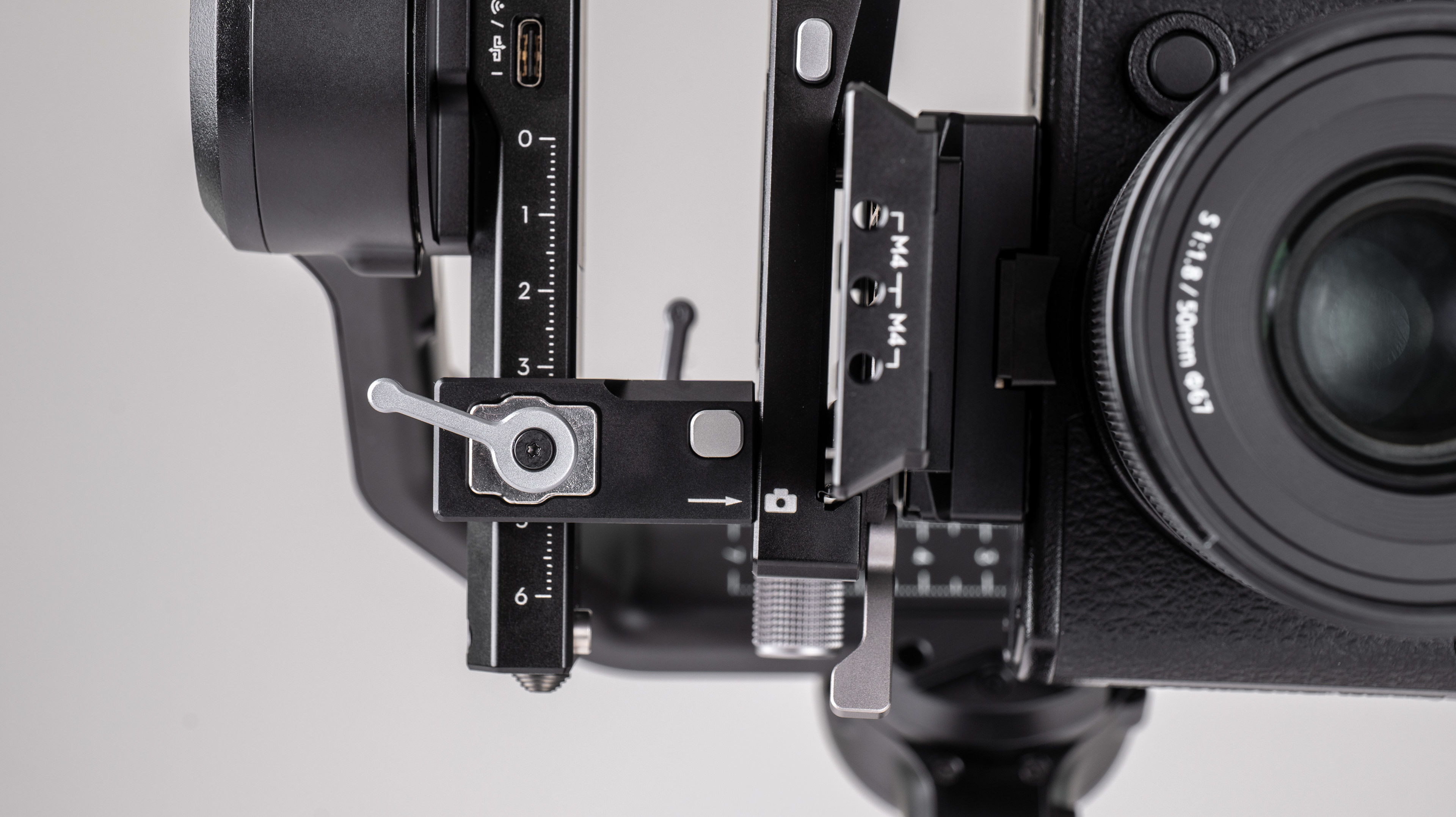
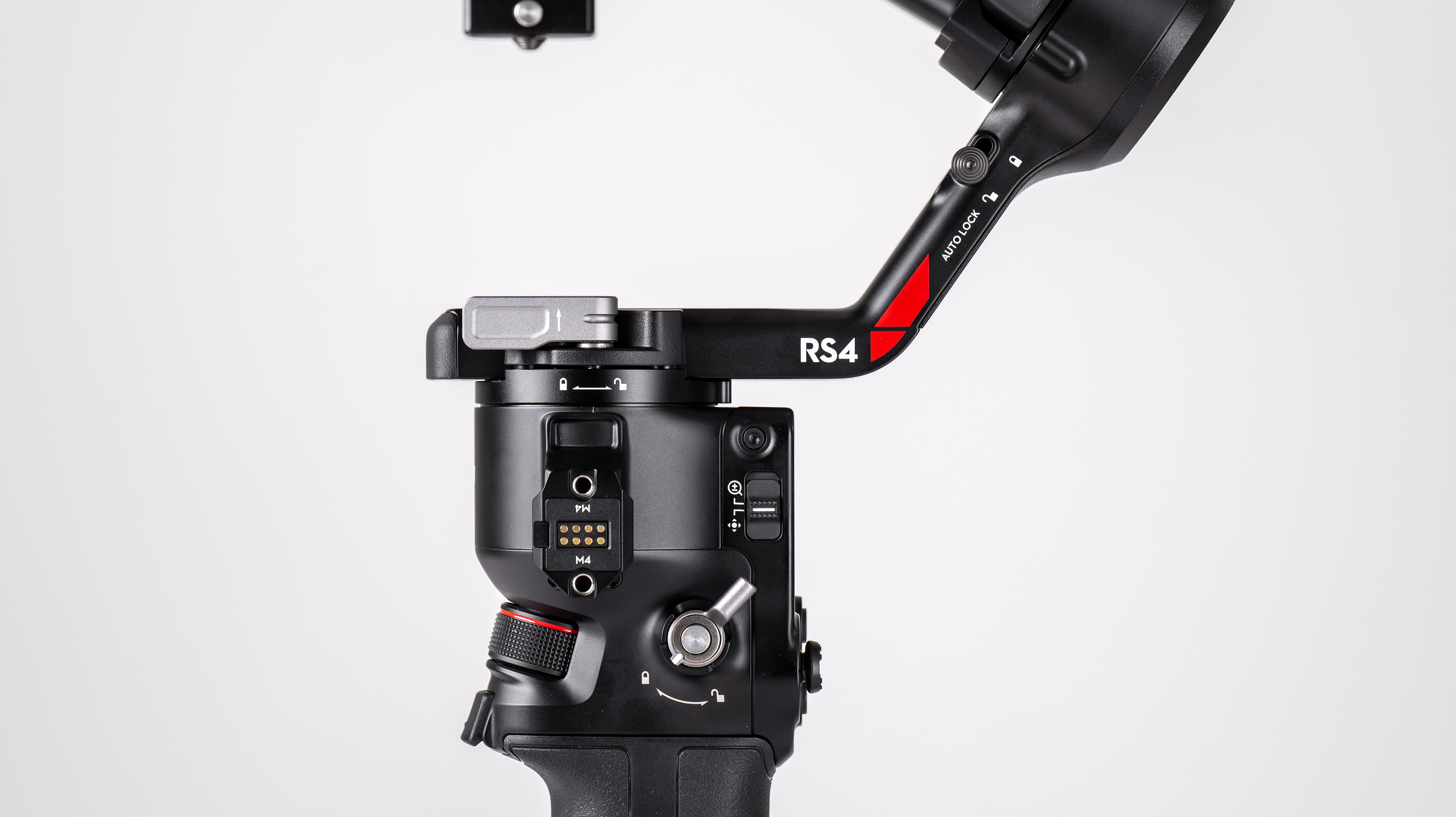
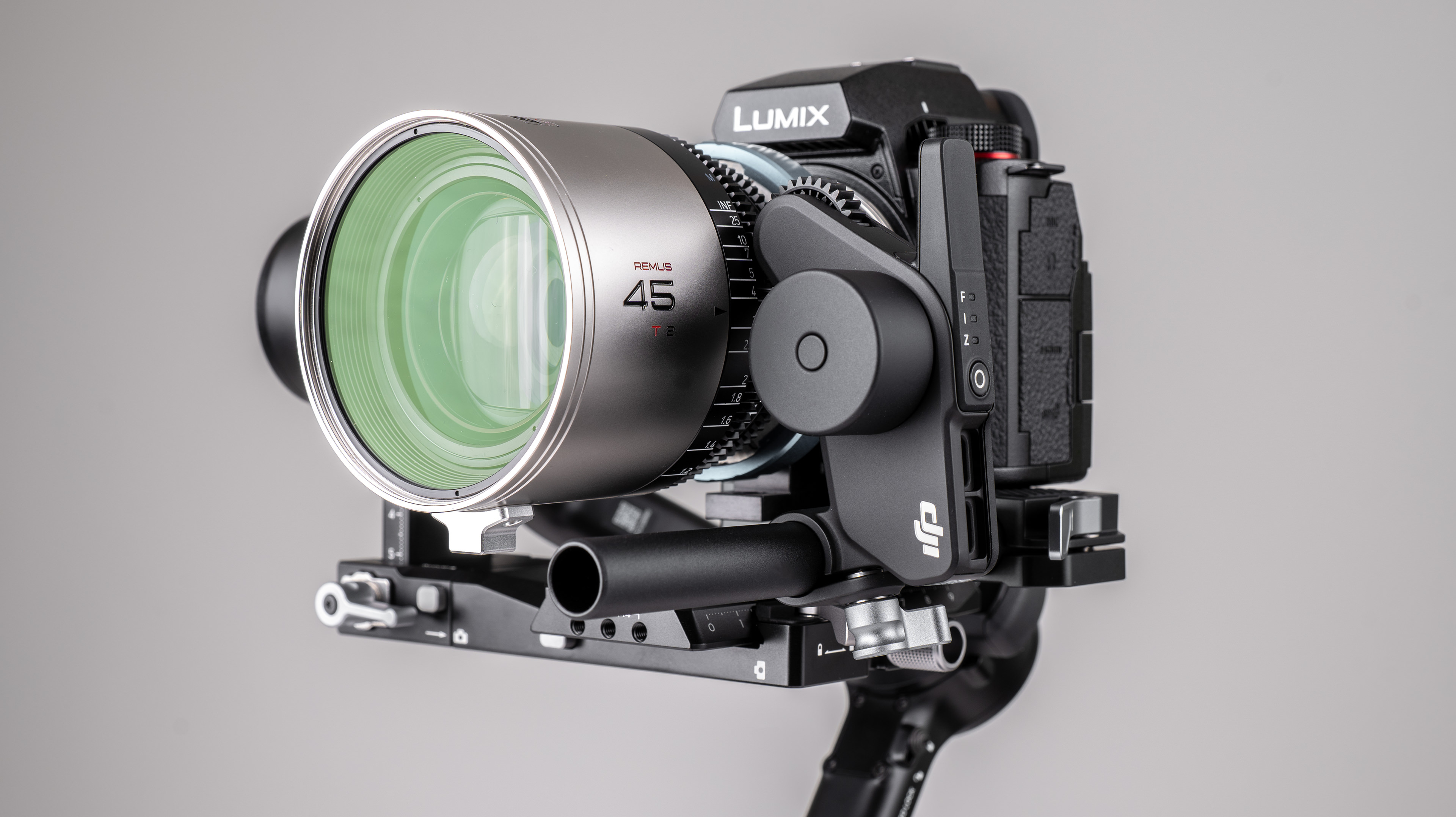
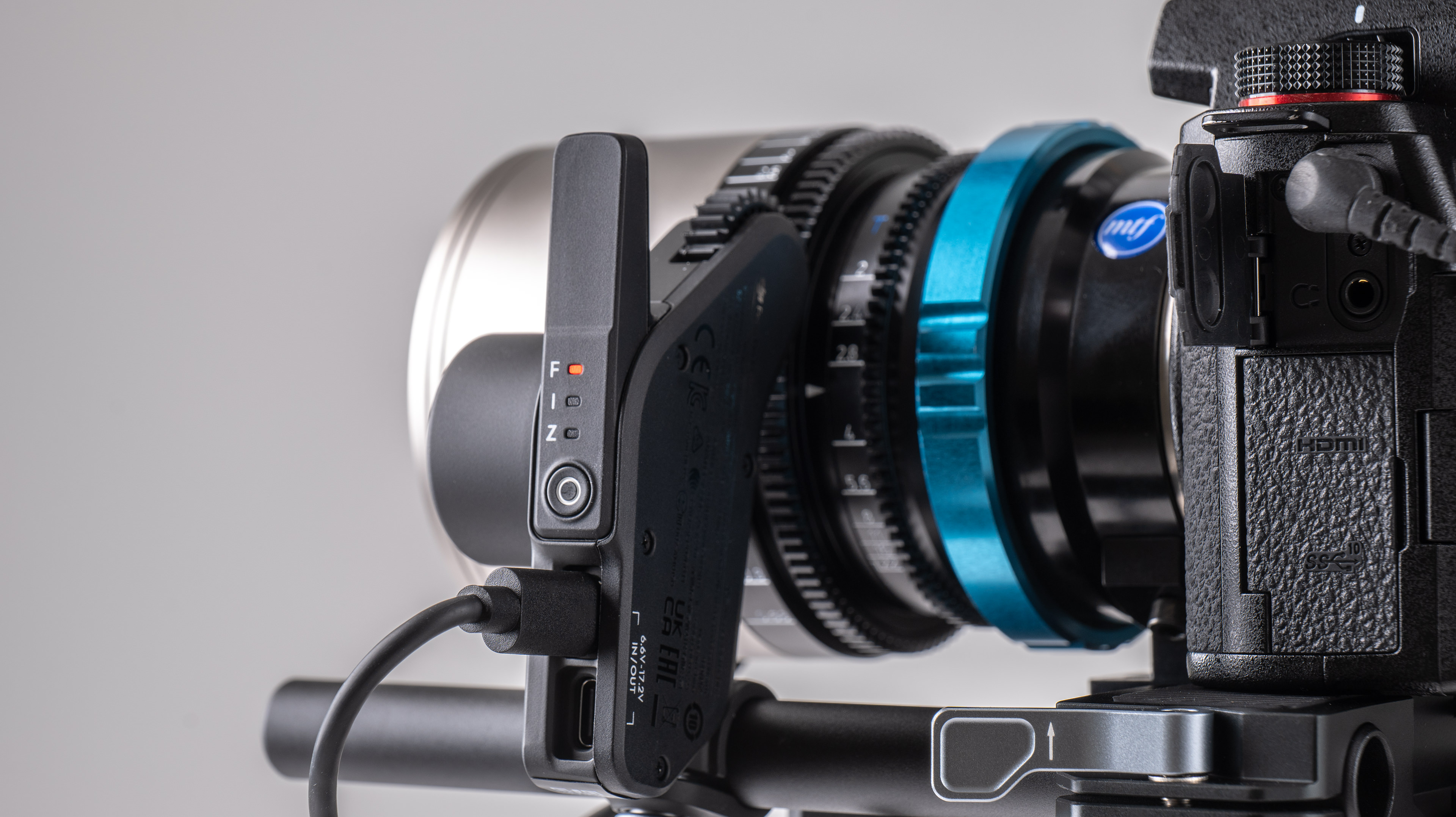

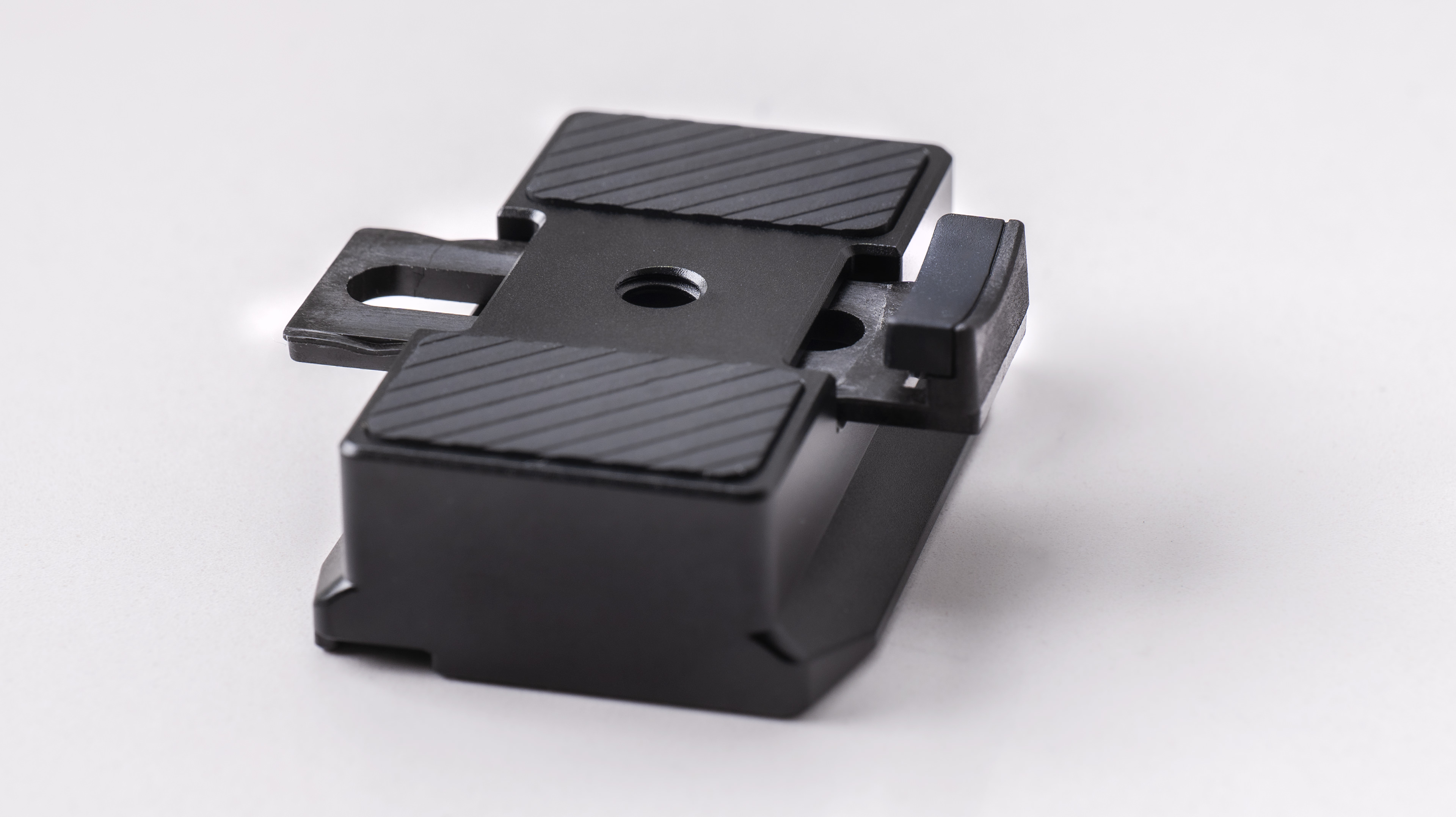
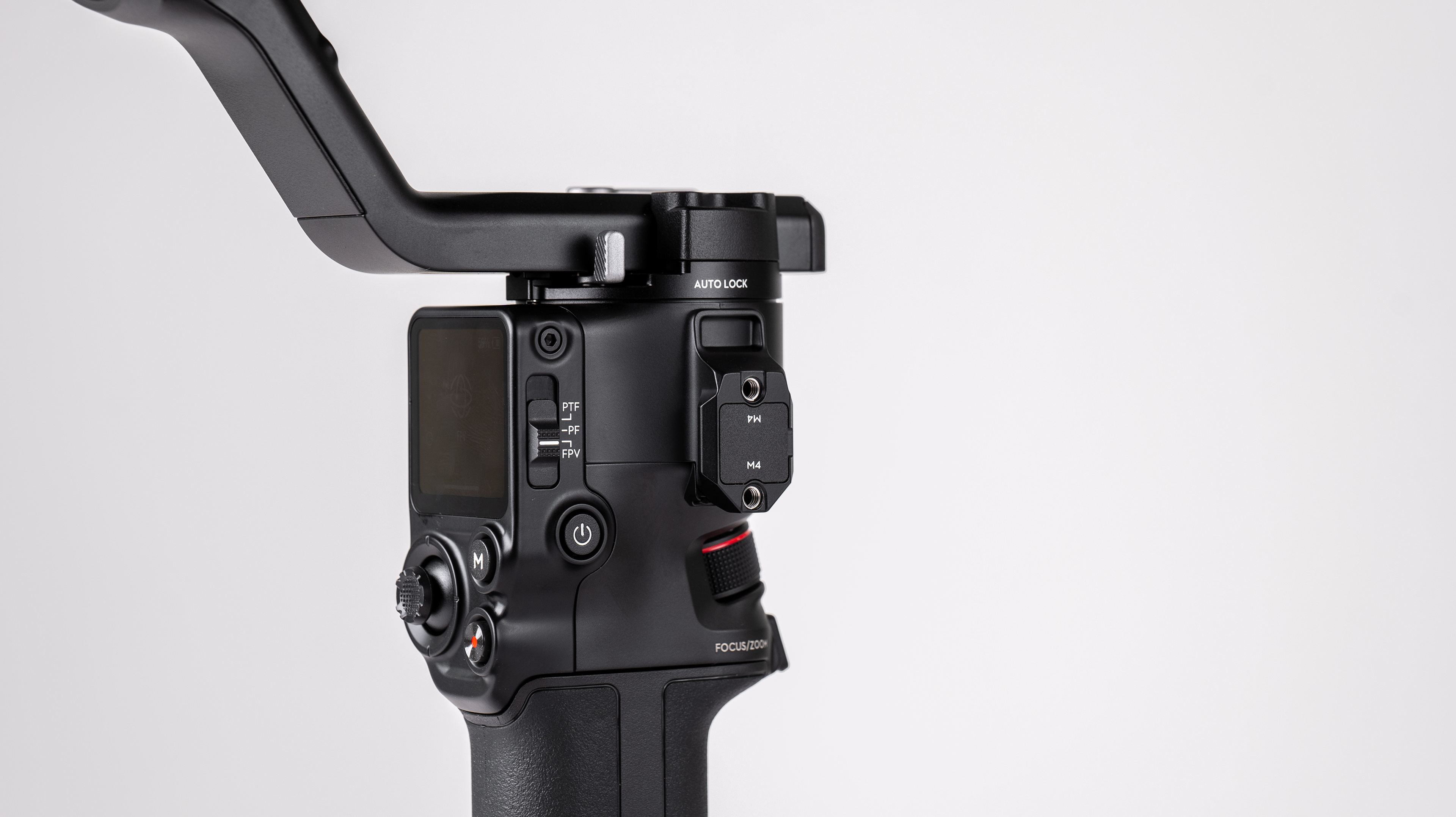
If you go for the RS 4 combo kit you’ll get the lens control motor in the box. The Focus Pro Motor can be used to turn zoom rings as well as focus rings on your lens, and can be controlled either via the joystick for zooming or the front dial for focusing. This new version of the motor is 30% faster than the previous model, but still offers users the chance to adjust its speed, torque and direction via the menu.
As before, the gimbal’s control buttons and dials can be used to control certain elements of compatible cameras, so you can stop/start recording, take a photo, and adjust some exposure settings. Depending on the model of camera, these things can be achieved wirelessly via Bluetooth or via a USB connection to the body of the gimbal.
The DJI Ronin RS 4 is not entirely without its complexities, but so long as you dedicate the time and effort to familiarize yourself with its workings it will reward you will good faithful service. In the past I’ve often felt I was working harder than the gimbal I was using, but in the case of the Ronin RS 4 that balance is switched – the gimbal is definitely putting in a good shift and working hard to make the life of the operator a lot easier.
Of course footage is smooth when walking with the head in the standard position, but anyone can do that. What counts here is that you can throw the camera around, take it high and drop it low, and the motors can cope – even when you’ve added a load of extras to the lens or the hotshoe.
Fast walking and running scenes are also very well compensated for, but it is the Ronin’s ability to make all the same right moves in vertical mode, with a 10-second adjustment, that marks it out for me.
DJI RS 4 price and availability
The DJI RS 4 is available now standalone for a pricy $549 / £469 and includes the gimbal, battery grip, USB-C cable, lens-fastening support, extended grip (plastic), quick-release plate, multi-camera control cable and screw kit. The Combo kit costs $719 / £619 and adds Focus Pro Motor, Focus Pro Motor Rod Mount kit, Focus Gear Strip, additional Multi-camera control cable, briefcase handle and carrying case.
If you have a weightier camera and lens combo then you'll need the RS 4 Pro instead, which is available for $869 / £749 (standalone, with a metal extended grip rather than plastic) or $1,099 / £949 in the Combo kit.
In addition, the DJI Focus Pro system can add superb manual focus assist tools including a LiDAR powered autofocus system for manual focus lenses. The All-In-One Combo costs $1,849 / £1,449 although items such as the Focus Pro LiDAR / Focus Pro Motor can be purchased separately. More details on the DJI website.
Should I buy the DJI RS 4?
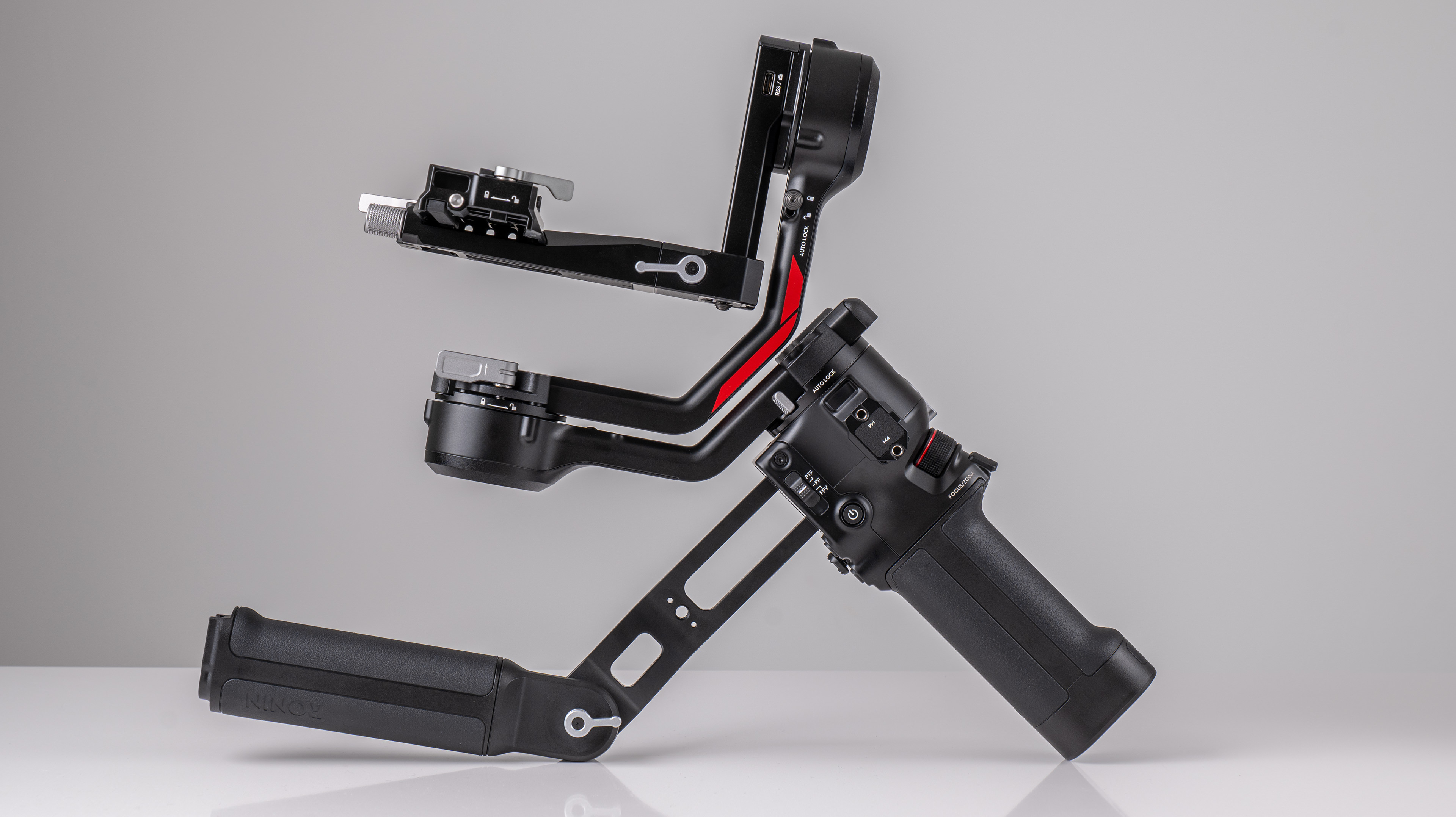
Buy it if...
You need a gimbal that’s as easy to set up
The RS 4 is as easy to get up and running with as a gimbal can currently be. It is still a bit of a process, but it’s reasonably painless.
You need a fully-featured gimbal that works really well
The RS 4 has a full range of features arranged in a way that makes them quick and easy to access.
You need manual focus assist tools
The combo kit is especially good for those shooting in manual focus, as the Focus Pro Motor is really good and can be controlled directly from the hand grip.
Don't buy it if...
You have a hefty camera and lens combo
The maximum payload for the RS 4 is 3kg, so if your kit weighs more get the Pro version. 3kg though is enough for most mirrorless systems even with a big lens.
You expect instant results
As easy as this gimbal is to use, that ease is only in relation to other gimbals. All gimbals require patience to get the best from them. If you don’t have a day to get to know a gimbal you might be better not buying one.
You don’t need all of its features
There are a lot of other gimbals that cost less than this model, and while they might not be as good for everything, if you’re only going to use basic modes and movements you don’t need all that this model can do
How I tested the DJI RS 4
I used this gimbal with the Panasonic Lumix S5 ll and the Lumix GH6, and fitted both cameras with a variety of big and small lenses, including some heavier manual-focus anamorphic lenses, to see how it performed in a range of situations. And I found that it performed very well – it’s easy to adjust when you’re changing lenses and cameras, and when adding extras on top.
I’ve used a lot of gimbals, and find that I often want to revert to my shoulder-mount rig because it’s less hassle to operate, but this model has me convinced that the right gimbal can offer similar stability and ease of use.
I’ve been working as a photography journalist for 28 years. I experienced the advent of handheld stabilization devices as they were conceived, and I’ve followed them closely as they’ve evolved, and become smaller, stronger and very much better.
First reviewed April 2024
